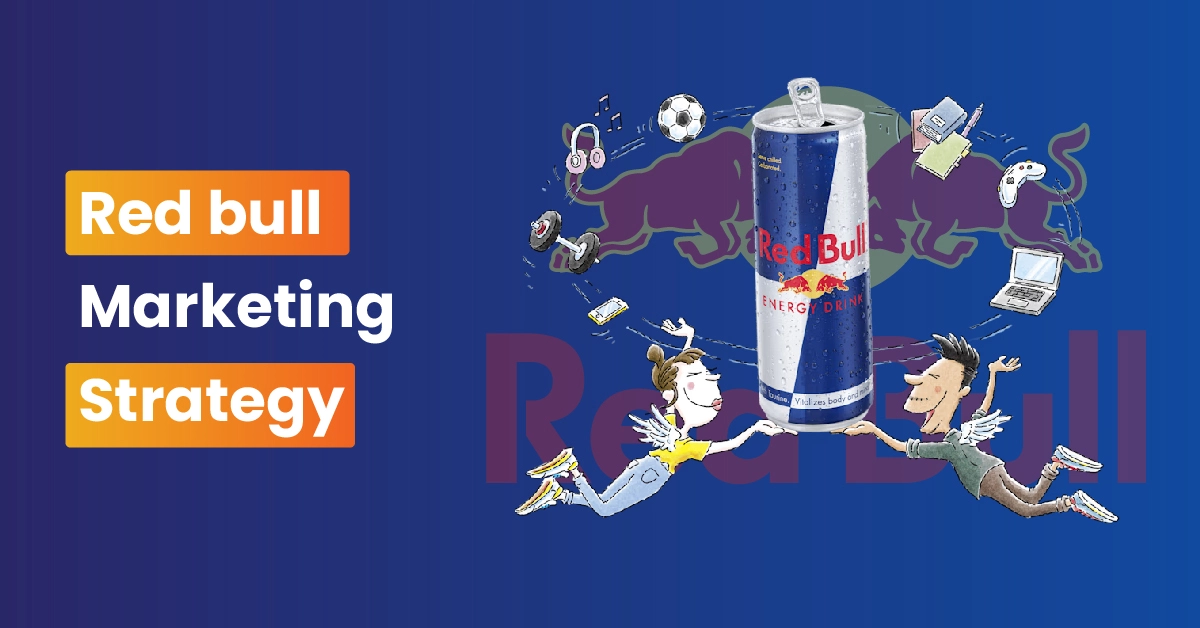Red Bull chose to take a riskier strategy in a world where traditional marketing methods are abundant. As a result of their innovative branding and marketing strategies, Red Bull’s brand value skyrocketed to $10.2 billion, as reported in Interbrand’s Best Global Brands 2020 study. But how did it all happen? Their innovative yet genuine Red Bull advertising campaign has the answer to this question.
Red Bull has established itself as a leading energy drink brand thanks to its memorable slogan, “Red Bull gives you wings,” and its visually breathtaking events. The brand positioned itself as more than just a beverage; it became a lifestyle choice by emphasizing extreme sports and adrenaline-filled activities. By adopting this novel strategy, Red Bull was able to forge a bond with its loyal customer base.
How did Red Bull make Marketing Fly High?
Red Bull’s groundbreaking approach revolutionized marketing in a few ways.
Origin
Red Bull wasn’t even a thing when Dietrich Matechitz launched it. But it established itself in the market the old-fashioned way. An adaptable company, Red Bull has come a long way from its 1992 cartoon ads to its current strong social media presence.
Provision of Occasions
Rather than focusing on a product, Red Bull’s ads appeal to consumers’ feelings and goals. Red Bull’s decision to associate itself with extreme sports like skateboarding, cliff diving, cycling, etc. captivated the audience for a considerable amount of time. Its marketing campaign portrays the company as a facilitator of exciting adventures. Its very name came to represent excitement and daring.
Promotional Events and Sponsorship
Red Bull revolutionized marketing with its groundbreaking use of sponsorship and event promotion. By supporting prominent extreme sports events like the Red Bull Air Race and the Red Bull Rampage, Red Bull strengthened its position in the market. Red Bull promoted its products and gave athletes a stage to show off their abilities by hosting and sponsoring these events. The mutually beneficial partnership between the athletes and the business increased credibility and trust among customers.
Red Bull also put a lot of money into event marketing and athlete sponsorships. Red Bull Flugtag and Red Bull Soapbox Race were only two of the brand’s events that drew thousands of people from all over the globe. Red Bull was able to display its products and interact with consumers face-to-face at these events, which doubled as entertainment.
Promotional Materials for Red Bull
Red Bull’s use of content marketing and storytelling greatly influenced its marketing success. Even at an early stage, the brand saw that customers were turning their backs on more conventional types of advertising. Red Bull overcame this obstacle by concentrating on making engaging and shareable content that spoke to their demographic.
Another strategy that Red Bull used to keep its audience’s attention was user-generated material. By tagging Red Bull, it prompted users to share their personal extreme sports stories. Red Bull encouraged user-generated content (UGC) highlighting the brand through social media contests and promotions.
The energy and enthusiasm of Red Bull’s consumers were channeled into the energy drink. Customers become brand champions by spreading the word about the company’s goods and way of life to everyone they know.
Brand Ambassadors and Influencer Marketing for Red Bull
A major factor in Red Bull’s marketing success was the company’s unique use of brand ambassadors and influencer marketing. The company’s leadership understood that customers were more likely to follow the advice of people they looked up to and respected.
Red Bull was able to sell its products far more effectively by teaming up with well-known figures in the extreme sports industry. Red Bull’s public personas were these enthusiastic individuals who came to represent the company’s beliefs and way of life. Red Bull’s partnerships included not only professional athletes but also social media personalities with sizable followings among the target demographic.
Red Bull’s capacity to associate itself with people who share its beliefs and goals is the key to the success of its influencer marketing and brand ambassador approach. This astute strategy allowed Red Bull to create genuine and significant relationships with its target audience.
Ads by Red Bull That Stand Out
In the marketing industry, Red Bull’s ads have become legendary. People can’t help but fall in love with the brand’s advertisements because of their distinct style and breathtaking visuals.
For as long as anybody can remember, Red Bull’s advertising campaigns have been at the forefront of innovative thinking. Red Bull’s ads have succeeded in making an emotional connection with viewers by using captivating narratives and eye-catching visuals.
Product Placement Marketing Plan for Red Bull
Red Bull increased its exposure and reach through a combination of tactics, including events, influencer marketing, storytelling, and the deliberate placement of its goods in films, television shows, and video games. Red Bull achieved product recognition and attractiveness by artfully incorporating their goods into popular culture.
The capacity to establish connections and strengthen the brand image is the key to Red Bull’s product placement and partnership strategy’s success.
Importance of Red Bull’s Advertising Campaign
Red Bull’s unconventional strategy has revolutionized the way brands approach marketing. The brand’s marketing strategy has been successful because it centers around extreme sports, uses sponsorship and event marketing, content marketing and storytelling, user-generated content, social media, unique advertising campaigns, influencer marketing, product placement, and partnerships.
Conclusion
Red Bull was successful in reaching a certain demographic and establishing brand loyalty by associating itself with action sports and other forms of extreme recreation. For brands aiming to stand out in the competitive marketing environment, Red Bull’s marketing journey offers vital lessons. When you put your mind to it, be creative, and prioritize building genuine relationships with customers, you’ll see your brand shake things up and turn the tables on your competitors.

